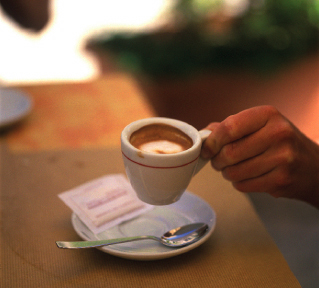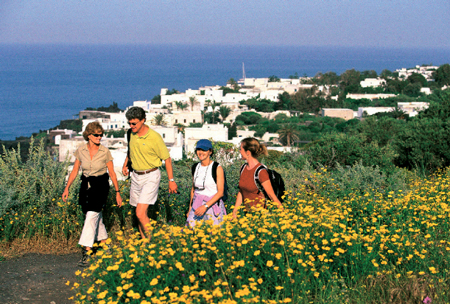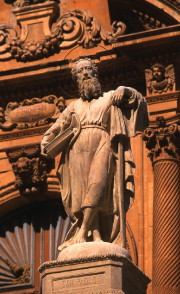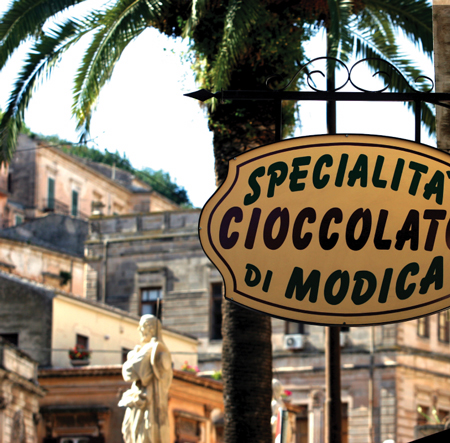My first journey to Sicily was about 30 years ago. I was 19 and flush with cash from a summertime stint in a dank and dangerous salmon-processing plant in Kodiak, Alaska. I had taken time off from my isolated, “potted” Ivy League school to spend a fall traveling solo in Europe—that being an era of cheap flights, an incredibly strong dollar and enticing student travel deals on rail and lodging throughout the continent.
I flew from San Francisco to London for a monthlong, unplanned odyssey that brought me across the Channel and through northern Europe to southern France and the medieval town of Perpignan, just across the border from Spain. There, while staying in a youth hostel, I met a German girl who dreamily described her visit to the beautiful Aeolian Islands in the Tyrrhenian Sea off of Sicily. Lured by her siren song, and with time still remaining on my rail pass, I pitched a train trip to Italy. In a fit of youthful impulse, we were off.
Arriving a day or so later in the seedy port town of Reggio Calabria at the southern tip of the mainland, we walked unnoticed onto a car ferry for an unexpected free ride to Sicily and, via another ferry, to the tiny islands of Lipari and Vulcano, two of the seven isles in the Aeolian archipelago. It was everything my friend had promised: beautiful beaches, sunny days, pristine fishing villages, quiet living. We had a memorable week.
Recently, I found myself back in beautiful Sicilia, this time taking photos for an active-travel tour company catalog, seeing new sights, indulging in the local food and wines, and reviving the memories of my visit here years ago.
Sicily, at nearly 10,000 square miles, is the largest region in Italy and the largest island in the Mediterranean. Not far from North Africa, it is an ancient crossroads, whose regional capital Palermo is Italy’s fifth-biggest city, a bustling citta of more than 1 million inhabitants. With a history stretching back across two millennia, Sicily has been ruled by Greeks, Romans, Byzantines, Arabs, Normans and Spanish. Each reigning occupier left its own impression on the local architecture, language and culture. History buffs love Sicily for its well-preserved archaeological sites and dazzling array of architecture, from classic Greek temples to huge medieval churches and entire towns clad in Baroque elegance.
Mount Etna, an active volcano whose 10,990-foot cone commands nearly every view, dominates the island’s hilly terrain. Ringed by a steep, jagged coastline, the island is dotted with towns overlooking the sea. The vast rural interior is characterized by fields and barren, windswept uplands. It’s a big place and takes a least a week to fully explore.
Life in Sicily, like in much of Italy, is steeped in tradition. It’s common to see elderly village women draped in black from head to toe, farmers in Godfather-esque straw caps leading mules through their fields, and grizzled fishermen gathered by wooden boats, repairing nets and selling their freshly caught wares in makeshift stalls. The pace is deliciously slow, colorful Sicilian dialects abound and the olive-oil-drenched, sea-inspired cuisine is enticing.
My weeklong trip started in Catania, where I had flown from Rome on a bumpy but scenic flight. I met my traveling companions and shuttled to Ragusa, where we settled into a magnificent hotel, the Eremo della Giubiliana, a12th-century Arabic fortification and later a convent used by the Knights of Malta. The hotel was full of comforts—a small pool in a gardenlike setting, a wonderful lounge with artwork and suits of armor, and cozy rooms that once served as cells for friars. A stone wall surrounds the hotel’s grounds and is topped by a whimsical turret whose winding staircase leads to views of the countryside. As found everywhere in Sicily, cats of all sorts wandered wherever they chose, adding a sense of feline mystery to the place.
We ventured out on bicycles through rolling terrain to the southeast, heading to Scicli, a fascinating city near Ragusa. Parking our bikes near the church of Santa Maria la Nova, with its huge neoclassical facade, we lunched outdoors on caprese salad and nocciola (hazelnut) gelato.
We biked onward along the agricultural Irminio River valley to delightful Modica, which was destroyed by an earthquake in 1693 and rebuilt in Baroque style. With honey-colored stone houses, huge churches, fountains, gargoyles and wrought iron balconies, Modica was a visual feast. To satisfy more than our eyes, we visited a dolceria modicana, a Modican chocolate factory that makes traditional Sicilian treats.
That evening in Ragusa Ibla we strolled through the town’s piazza and marveled at illuminated Baroque churches. In the wine cave of ristorante Don Serafino, we dined on a traditional Sicilian meal that began with an olive oil tasting followed by local specialties such as mackerel with tomato capuliatu, ravioli with Ragusano cheese and rabbit with bacon and pistachio nuts.
In the morning we traveled by van through a rugged landscape to Taormina, a coastal city perched on the slopes of Mount Tauro high above two sparkling bays. The main attraction is the Teatro Greco, a third-century B.C. Greek amphitheater later reconstructed in the first century A.D. by the Romans, who held gladiator games here.
After a guided tour of the theater, we hiked through the medieval center of Taormina, climbing steeply up a mule path lined with prickly pear and fig and olive trees to Castelmola, a cliffside hamlet built on the remains of a 16th-century castle. Here we lunched on crispy thin crust pizza, salads and refreshing granitas (a classic Sicilian crushed ice drink). Some of us trekked upward toward Mount Venere, the area’s highest mountain and said to have been the site of a Greek temple of Venus.
The highlight of our trip for me was our last stop: the Aeolian Islands. We ferried from the port city of Milazzo to pretty, car-free Panarea and settled into the Hotel Raya, which overlooks the whitewashed fishing village. We spent the afternoon hiking about the island amid a spectacular landscape of wildflowers and sea views. The following day we cruised to the nearby island of Stromboli, where we walked in fields below the famous Stromboli volcano, featured in the 1950 film of the same name starring Ingrid Bergman.
One of the world’s most active volcanoes, Stromboli has been in near continuous eruption for more than 3,000 years. Many hikers come here to ascend the 3,031-foot volcano for an up-close look into the caldera. We opted to visit the small town, lunch leisurely and hike around the bay. That night, aboard a small private boat, we watched Stromboli erupt under the stars. It was a dramatic finale to a luxurious but active week that, for those days at least, allowed me to relive the memories of my low-budget, youthful escapade in bella Sicilia.
SICILY ACTIVE TRAVEL TOUR OPERATIONS
Backroads
backroads.com
Ciclismo Classico
ciclismoclassico.com
Experience Plus
experienceplus.com


